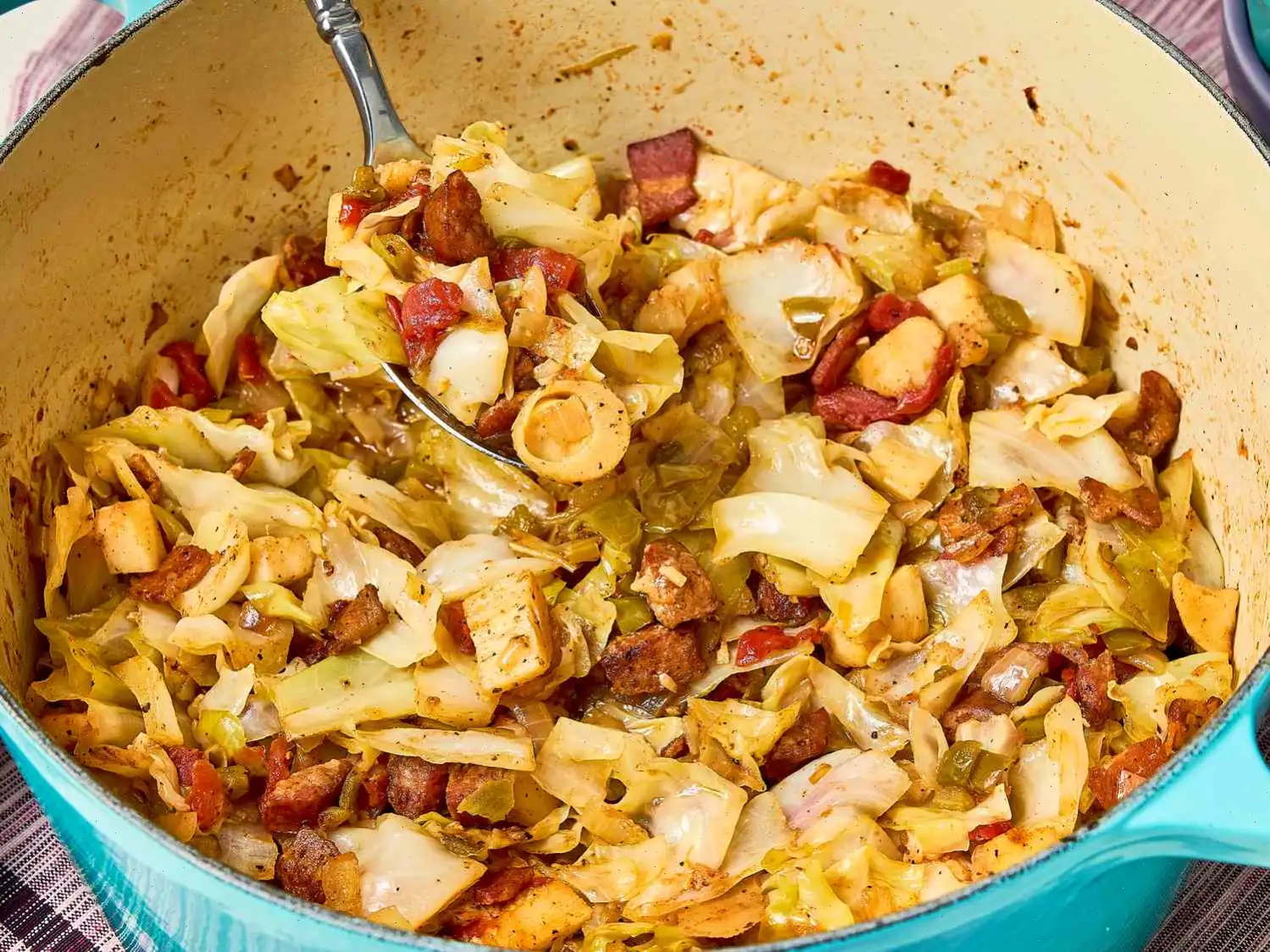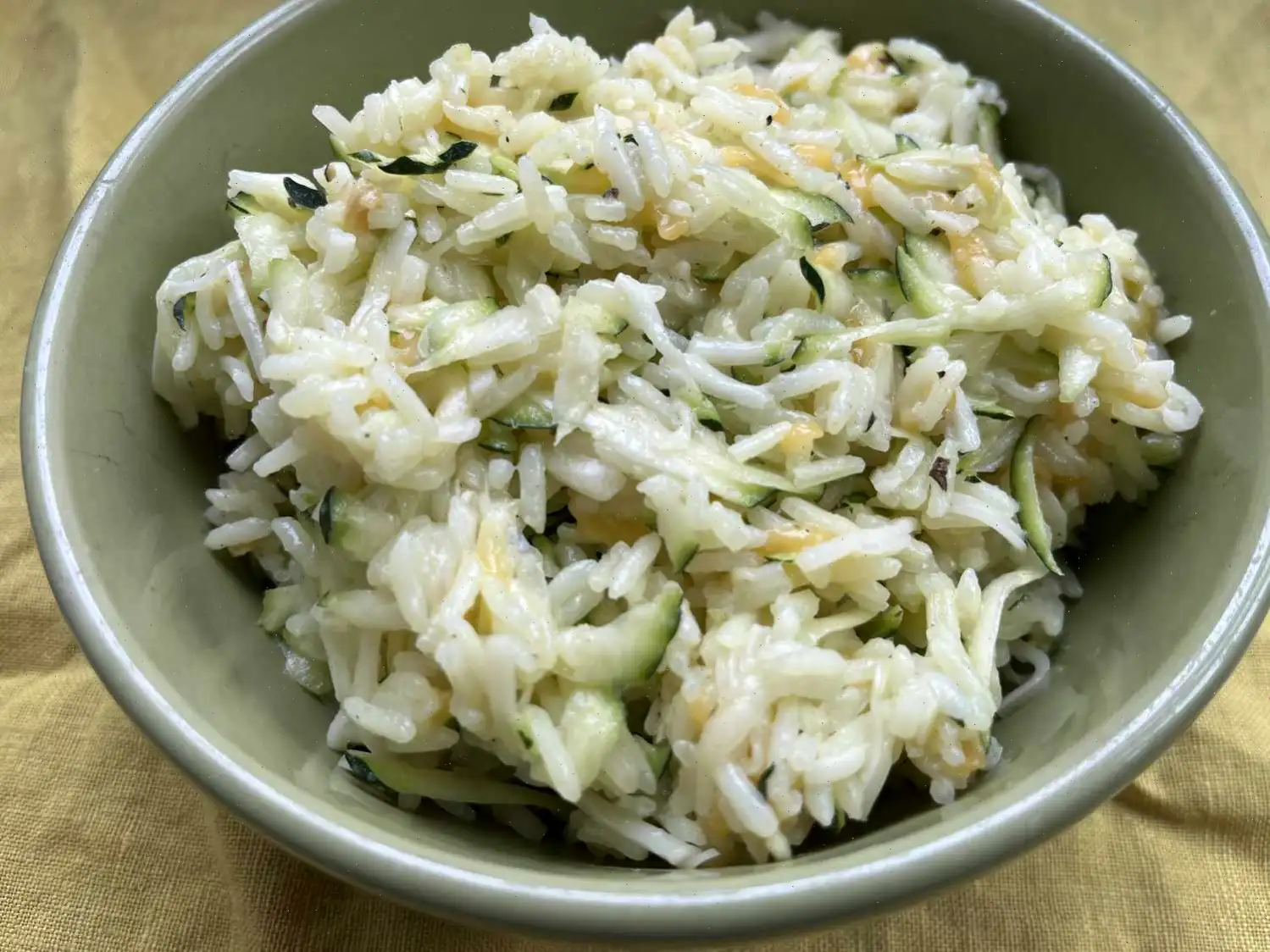
Red Cabbage Recipe
Sweet and Sour Braised Red Cabbage with Apples
This flavorful dish combines tender red cabbage, tart apples, and a tangy-sweet blend of vinegar and spices. Its a perfect side dish for any meal, providing both vibrant color and a delightful contrast of flavors.
Ingredients
- cup water
- 1 small head red cabbage, finely shredded
- 3 apples, peeled, cored, and chopped
- 1 cup distilled white vinegar
- cup packed brown sugar
- 2 tablespoons butter, divided
- teaspoon ground cinnamon
- teaspoon ground allspice
- teaspoon ground cloves
Directions
Step 1: Place the water in a large saucepan over high heat.
Step 2: Stir in the shredded cabbage, chopped apples, vinegar, brown sugar, 1 tablespoon of butter, cinnamon, allspice, and cloves.
Step 3: Bring the mixture to a boil, stirring occasionally.
Step 4: Once boiling, reduce the heat to low, cover the saucepan, and simmer for about 45 minutes. Stir occasionally until the cabbage is tender and the flavors are well combined.
Step 5: After the cabbage has softened, stir in the remaining 1 tablespoon of butter and mix well.
Step 6: Serve hot as a flavorful side dish. Enjoy!
Nutrition Facts (per serving)
- Calories: 136
- Fat: 4g
- Saturated Fat: 3g
- Cholesterol: 10mg
- Sodium: 56mg
- Carbohydrates: 26g
- Dietary Fiber: 4g
- Total Sugars: 20g
- Protein: 2g
- Vitamin C: 57mg
- Calcium: 58mg
- Iron: 1mg
- Potassium: 319mg
* Percent Daily Values are based on a 2,000 calorie diet. Your daily values may vary based on your individual needs.
Red Cabbage Recipe

Author: Arita Heerschap Droog
History and Origin of Red Cabbage
Red cabbage, also known as "Blaukraut" in Germany, has been a staple in European cuisine for centuries. This vibrant vegetable has a long history of being used in cooking due to its ability to complement a variety of meats, particularly pork and beef. The dish itselfwhere cabbage is stewed with apples, vinegar, and sugaroriginates from central and Eastern European culinary traditions, where it is often served as a side dish. Its especially popular in Germany, Austria, and the Netherlands, where it pairs beautifully with hearty meats like sausages, roast pork, or even game meats. The combination of sweet and sour flavors mirrors the regions love for balancing rich, savory dishes with tangy or sweet accompaniments.
Regional Variations
While red cabbage is enjoyed throughout many parts of Europe, it has regional variations that reflect local tastes and ingredients. In Germany, the dish is known as "Rotkohl" and is typically cooked with apple, vinegar, and sometimes red wine, lending a tangy and sweet flavor profile. In contrast, the Dutch version, known as "rode kool," often incorporates a bit of syrup, providing a richer sweetness. Some variations also include spices like cloves, juniper berries, and cinnamon, adding complexity to the flavor. Additionally, the dish can be served hot or cold, and it often appears at festive occasions like Christmas dinners and Oktoberfest celebrations.
What Makes It Different?
What sets red cabbage apart from other cabbage dishes is its unique combination of sweet and sour flavors. While other cabbage preparations might focus solely on savory elements, red cabbage is distinguished by its use of apples, vinegar, and brown sugar. This balance of tangy and sweet creates a vibrant, flavorful side dish that enhances rather than competes with the main course. Compared to similar dishes like sauerkraut, which is more fermented and tangy, red cabbage is softer, sweeter, and has a fresher taste, often thanks to the addition of fresh apples and butter.
Where Is It Typically Served?
Red cabbage is a versatile side dish that can be served alongside a variety of main courses. In Germany and Austria, its most commonly paired with roasted meats, particularly pork, sausages, and beef roulades. Its also a popular accompaniment to game meats like venison or duck, which benefit from the rich, tart flavor of the cabbage. This dish is commonly found at German and Central European restaurants worldwide, particularly during the holiday season. Outside of Europe, red cabbage has gained popularity in other regions, especially in North America, where its enjoyed as a complement to barbecue dishes or as part of a holiday meal.
Interesting Facts About Red Cabbage
- Red cabbage gets its vibrant color from anthocyanins, which are antioxidant compounds also found in other red, purple, and blue fruits and vegetables.
- The dish is highly versatile; many variations include ingredients like raisins, wine, or bacon, which add new textures and flavors.
- Red cabbage is rich in vitamin C, providing a natural boost to the immune system.
- Historically, red cabbage was also used as a natural dye, thanks to its strong pigmentation.
- In some cultures, the dish is believed to have health benefits, including aiding digestion and reducing inflammation due to the cabbage's high fiber content.
Conclusion
Red cabbage is more than just a side dish; its a flavorful piece of culinary history that continues to bring joy to tables around the world. With its sweet and sour balance, regional variations, and rich history, it is no wonder this dish remains a beloved classic in many European kitchens. Whether served with a hearty roast or as part of a festive spread, its a dish that brings color and flavor to any meal.
FAQ about Red Cabbage Recipe
Comments
Aaron Campbell
01/13/2025 11:16:12 AM
I'm giving this recipe a 5-star rating for meeting the essential requirement of preparing red cabbage. In my region of Germany, we refer to this dish as blaukraut. I believe this recipe is authentic, but personally, I prefer vegetables without too many spices. I omitted most of the spices, except for a hint of allspice and 1/4 tsp of cinnamon. I used only one Granny Smith apple as that was all I had on hand. I increased the amount of vinegar by an extra tablespoon and added about 1/8 cup more of brown sugar, while skipping the final tablespoon of butter. I felt that the dish didn't require it. I sliced the cabbage by hand, and as the pieces were slightly thick, I cooked it for around 2 hours until it reached the desired taste, which was definitely superior to store-bought. Be cautious not to overcook it. Surprisingly, the dish turned out rich in flavor even without the additional butter, so I stuck to leaving it out. I'm certain I will prepare this dish again. My husband thoroughly enjoyed it, and it paired well with the rinderrouladen (beef rolls) I made from another recipe. Thank you.
Barbara Harris
02/22/2023 07:14:00 AM
So easy! This year was my first experience with a garden plot and I found myself with an abundance of red cabbage. This recipe is a fantastic way to make use of them. It's a versatile dish that can be enjoyed as a cold or hot side for any meal. I decided to include half a cup of raisins for some added texture, which I believe I've tasted in this dish before. A beloved Pennsylvania Dutch classic!
Elizabeth Jones
07/25/2024 04:46:40 PM
Tasty and simple.
Helen Young
12/20/2023 03:19:12 AM
I added approximately half a cup of onions - delicious!








